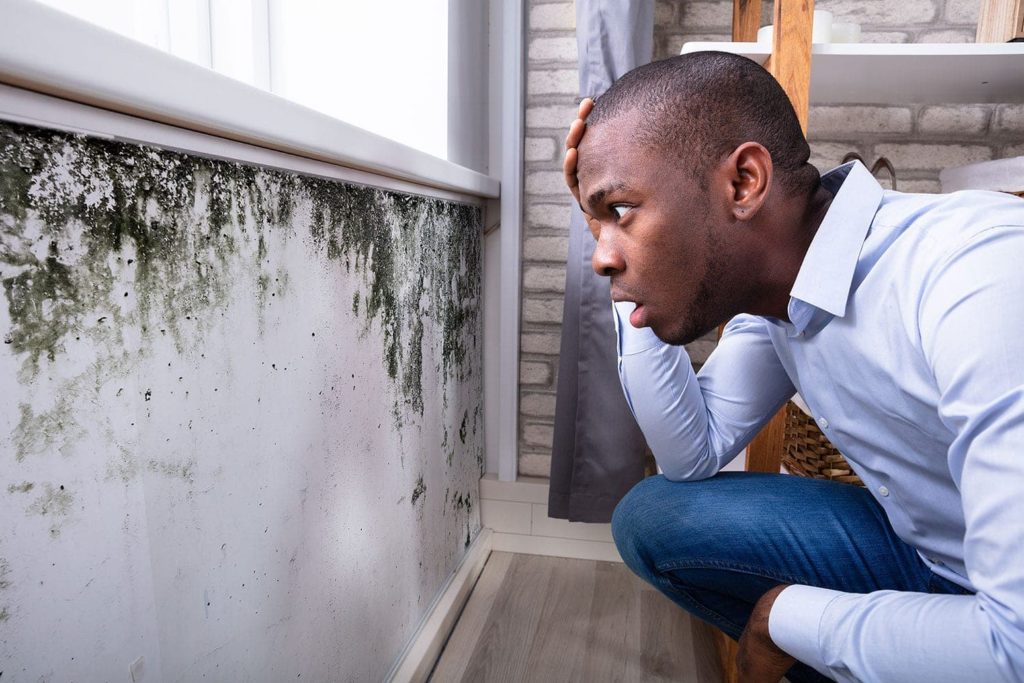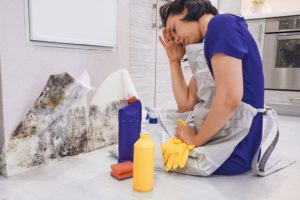It's the nightmare of any homeowner...discovering mold growth in your home. So many thoughts spin through your mind. Thoughts like...
- "I'm a clean person and I care for my home! How did I get mold growth in my home?"
- "What do I do about the mold?"
- "Can I treat mold on my own?"
- "How much is mold remediation going to cost?"

Discovering Mold In Your Home
We'll cover just the first question in this article. But we need to start by saying that mold growth is not a result of having a dirty home! So don't feel like a failure if you discover mold growth. According to the EPA, molds are part of the natural environment. Mold growth is the result of three things being present at the same time...and these things can be present in any home in varying degrees, regardless of the owner.
- high enough humidity
- high enough concentration of mold spores
- an organic food source for the mold spores
We hope that some education about mold will allay your fears and give you confidence that you can deal with mold growth in your home!
Signs of Mold Growth in Your Home
The EPA has a really great interactive tour of your home and how mold can affect each area. Here are some common places to look for mold growth in your home.
Your Attic
One common cause of mold in the home is poor attic insulation. Insufficient insulation leads to changes in temperature that can cause moisture to develop in the attic over the span of months or years. Mold uses the paper on the insulation as a food source and is able to grow because of the moisture present. Here are a few possible issues that can lead to mold in your attic:
- Lack of enough ventilation.
- Kitchen or bath venting to the attic.
- Improperly installed or insufficient insulation.
- Stored items eliminating air flow and cardboard boxes absorbing moisture.
Your Living Spaces
Your living spaces like living rooms, kitchens, bedrooms and even more so, bathrooms and laundry rooms can support mold growth too. Look for signs of mold growth from issues like...
- High humidity in rooms like bathrooms and laundry rooms that aren’t ventilated properly.
- Leaks from refrigerator ice maker lines, a dishwasher or a washing machine connection.
- Leaks around windows and doors due to wood rot, caulking cracks, and faulty installations.
- Plumbing leaks, especially in areas that are hard to access or are cluttered, like under a sink.
Your Basement
Basements and crawl spaces have all of the right things happening to encourage mold growth. It’s very important to control moisture in basements with a reliable dehumidifier all year-round. In addition to moisture control, keep an eye out for places water can enter your home, and try to keep clutter down where possible. Here are some typical markers that there may be mold growth...
- High humidity
- Lack of a dehumidifier, one with a full tank, or having insufficient capacity
- A large amount of personal items that would eliminate air flow.
- Cardboard boxes that absorb moisture and provide food for mold spores.
- A lack of crawl space ventilation and/or a vapor barrier
- Foundation wall and floor cracks that leak after storms
- A sump pump that is unsealed and/or not operational
Your Exterior
This one may not occur to you, but the exterior of your home can suffer from damaging mold growth as well. It's wise to keep any eye out for water damage, or any of the following items...
- Roof leaks and issues with flashing
- Leaks around windows and doors due to wood rot, caulking cracks, or faulty installations
- Clogged gutters, downspouts that don't move water away from the building
- Gaps around electrical fixtures and pipes that can allow water to penetrate
- Lawn sprinklers that are too close to the building
- Improper grading
Any of the issues mentioned above can lead to your home becoming a home for mold too. Take a few minutes to look for the signs above each time you visit some of those key areas in your house. It's a good idea to examine your home’s basement, exterior, and attic at once a year or more to look for new issues that may have been caused by weather.
What Do I Do If I Find Mold In My Home?

If you see one of the mold related issues we discussed here, call us to talk about how we can help. The phone call is free and we can help you determine how large of an issue you're dealing with. Mold remediation is a very complex issue that is often not able to be dealt with successfully by a homeowner. While visible mold may be removed initially, the underlying issue is often not resolved, leading to the mold returning. Meanwhile the health of the homeowner is negatively affected.
The best course of action when you discover mold growth in your home is to call a properly trained professional. Clean and Restore has expert certifications in Applied Antimicrobial and Mold Remediation, FEMA Certified and have over 20 years of experience. Read more about our mold remediation services or call us at 802-585-1332 to learn more about our mold remediation services.
